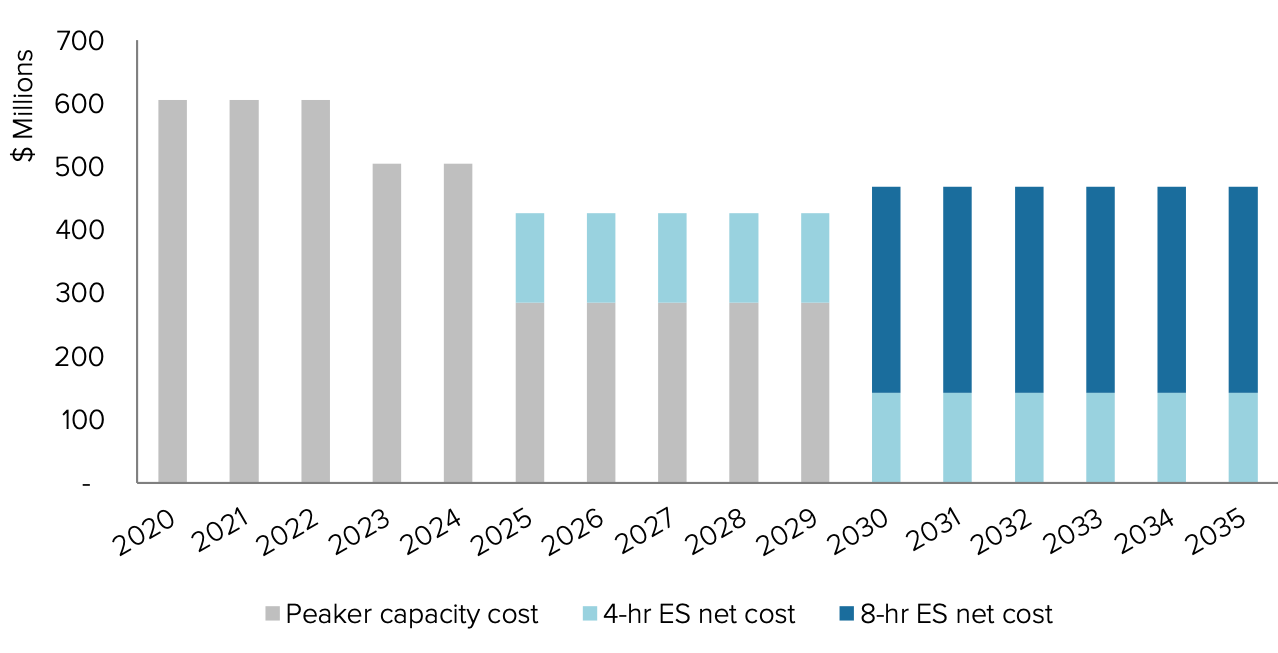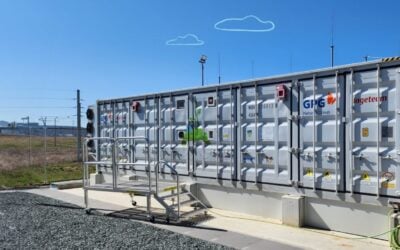A combination of renewable energy, energy efficiency and energy storage can be used to effectively retire New York City’s entire fleet of more than 6GW of peaker plants by 2030, a new study has found.
New York City’s fossil fuel-fired peaker plants are among the most under-utilised assets on the grid and produce the most expensive electricity, but contribute highly to emissions levels, particularly nitrogen oxides, carbon dioxide and sulfur dioxide, contributing to greenhouse gas levels as well as health risks. Due to the densely populated nature of the city and electricity load constraints, most are sited close to urban centres.
Enjoy 12 months of exclusive analysis
- Regular insight and analysis of the industry’s biggest developments
- In-depth interviews with the industry’s leading figures
- Annual digital subscription to the PV Tech Power journal
- Discounts on Solar Media’s portfolio of events, in-person and virtual
The plants are only called into action during periods of peak demand, hence the name, but they are still paid around US$400 million in capacity payments to be available throughout the year, every year. This means that while electricity from them can be up to 1,300% more expensive than the average cost of electricity in the state, most of New York City’s peaker plants only run for about 5% of the entire year. Similarly, the vast majority are never called into action for more than eight hours at a time and generally for far fewer hours.
In a new study by Strategen Consulting, commissioned by a collection of environmental justice groups called PEAK Coalition, around 5.6GW of rooftop solar, 3GW of offshore wind, 5,400GWh of energy efficiency measures and 4,200MW of energy storage could fulfil the role of the city’s entire fleet by 2030. PEAK Coalition's membership includes grassroots organisation UPROSE, community development group The POINT CDC, New York City Environmental Justice Alliance (NYC-EJA), New York Lawyers for the Public Interest (NYLPI), and Clean Energy Group (CEG).
More than half of the total 6,093MW of peaker plants — many of which have been in operation since the mid-20th century, much longer than they were intended to be — could be replaced by 2025 using a mix of resources that includes four-hour duration energy storage. Going to 2030, the task calls for longer-duration energy storage with about eight-hours’ duration, as newer peaker plants that run for more hours are replaced. According to Strategen's report 'The fossil fuel endgame: A frontline vision to retire New York City's Peaker Plants by 2030,' the replacement of peaking fossil fuel assets with cleaner alternatives could save the state around US$426 million a year, and represent more than a billion dollars in savings by the year 2035.

An unequal distribution of power
Around 87% of the entire state’s reliability commitment was sourced from power generation in New York City, but while the less heavily populated Upstate New York region is already able to rely on 90% clean energy from sources including large hydroelectric, about more than 60% of power in the Downstate New York area comes from fossil fuels still, and New York City is still among the areas most reliant.
Many of the older legacy peaker plants are still running on the most polluting options, kerosene and fuel oil, as well as newer ones that run on gas, and of the three-quarters of a million people in NYC living within one mile of a peaker plant, 78% are in low-income groups or are communities of colour, suffering the worst impacts of local pollution.
Peaker plants contribute as much as 97% of the state’s nitrous oxide emissions despite only contributing just over a third of gross load. Strategen Consulting also confirmed that over a decade, New Yorkers across the whole state paid around US$4.5 billion over the past decade for the plants including capacity payments for mostly idle assets.
The study follows on the back of another similar one produced by Strategen late last year that found it would be both technically feasible and cost-effective to replace the 2,300MW of peaker plants in another New York region, Long Island, with energy storage the main technology to enable that transition alongside growing shares of offshore wind, solar and improvements to energy efficiency.
Action is already being taken, or at least, being taken seriously, by New York utilities including the New York Power Authority (NYPA). Energy-Storage.news reported in October last year that NYPA, a public power utility which serves around 25% of the state’s electrical load, has agreed with PEAK Coalition to conduct an assessment of how it can reduce emissions and other negative impacts of the 461MW of peaker plants within its own fleet.
Energy storage was cited as a potential option for that endeavour, and NYPA has said in its recent strategic transformation plan that it will enable 450MW of energy storage deployments within its service area by 2030, as well as focusing on long-duration and short-duration energy storage technologies as appropriate.
In an interview earlier this year, NYPA’s chief commercial officer (CCO) Sarah Orban Salati told Energy-Storage.news that transitioning away from natural gas including peaker plants is a key priority for the group. Salati said that environmental justice is also a key pillar in NYPA’s strategy, and that because reliability requirements mean that 80% of power generation in the state needs to be close to load, along with energy storage, things like distributed community solar and EV chargers in “areas that are typically disadvantaged”, are being supported. Already on the way is one 100MW / 400MWh battery energy storage project in the NYC borough of Queens which will provide peaking capacity, to be hosted at a former fossil fuel plant site on land leased by NYPA to utility Con Edison.
New York, and its Governor Andrew Cuomo, have been lauded for leadership on renewables and climate, with Cuomo's Climate Protection policies targeting 100% emissions-free electricity by 2040 and on the way to that deploying 1.5GW of energy storage by 2025 and 3GW by 2030. Peaker plants are one solid example of how digging into the specific details of how that energy transition will be achieved could yield affordable, effective results.
The Energy Storage Summit USA 2021, hosted by our publisher Solar Media, takes place online on 23, 24 March and again on 30, 31 March. See the website for more details.






